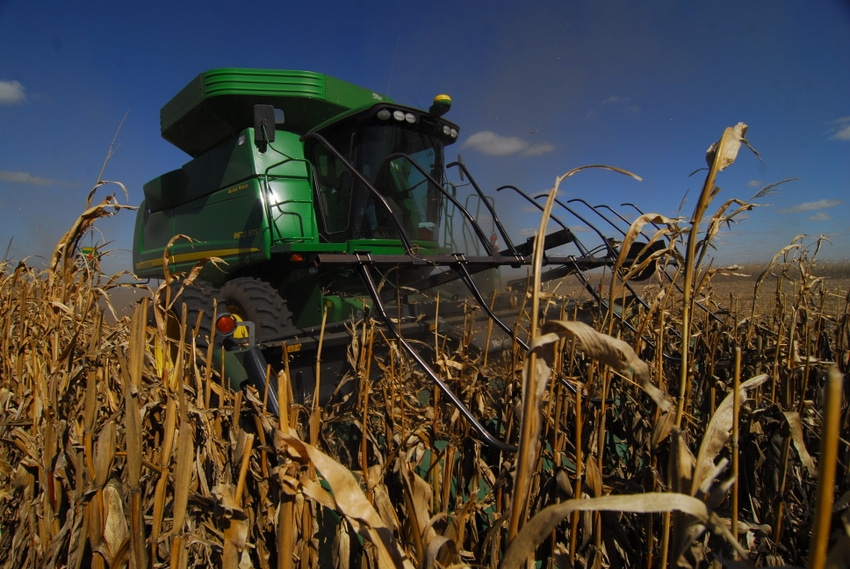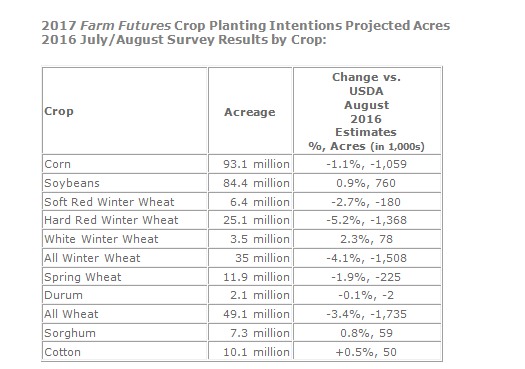August 30, 2016

Farmers may increase their soybean acreage in 2017 because of the strong demand they are seeing this year.
That’s what a survey by Corn and Soybean Digest’s sister publication, Farm Futures, shows. It’s the first survey of 2017 planting intentions by the publication.
Results of the annual survey are released on the opening day of Penton Agriculture's 2016 Farm Progress Show, the nation's largest outdoor farm show, held near Boone, Iowa Aug. 30-Sept. 1.
Record soybean acres indicated
Growers said they are considering devoting a record 84.4 million acres to the oilseed, up almost 1 percent from 2016. But at the same time, they plan to put in less corn and wheat. Though farmers have shown a preference for corn historically, red ink may trim plantings to only 93.1 million acres next spring. That would be down around 1 million from 2016, when they boosted plantings 7 percent.
Other crop shifts
Wheat seedings could be lower for the fourth consecutive year, in a market beset by low prices. Producers said they were ready to plant 49.1 million acres, down 3.4 percent, which would be the lowest total since 1970. Most of the cutback would come in hard red winter wheat sown on the central and southern Plains, which had very good yields in 2016, and very weak cash prices as a result. Hard red winter wheat seedings could fall nearly 1.4 million, to 25.1 million. Soft red winter wheat could also be down, losing 2.7 percent to 6.4 million. But growers in the Pacific Northwest could be ready to boost white wheat planting modestly if conditions allow.
On the northern Plains, spring wheat ground could fall nearly 2 percent to 11.9 million, with durum down slightly after an increase in 2016.
Two other crops besides soybeans could pull a little acreage away from wheat and corn. Growers said they want to boost cotton plantings about one-half of 1 percent to 10.1 million. Sorghum ground could also be up less than 1 percent to 7.3 million.
The survey queried 1,225 growers from around the U.S. about their plans during late July and early August. Producers were invited by email to fill out an online entry form.
With harvest of 2016 crops barely underway, much obviously could change by the time planters start rolling, said Farm Futures Grain Market Analyst, Bryce Knorr, who has conducted surveys for the magazine since 1988.
“Farmers show a tendency to base planting decisions on what wobrked the previous year, and soybeans were profitable for growers able to take advantage of hedging opportunities this summer,” said Knorr. “Strong buying from China also provides a much better fundamental underpinning for the market compared to corn and wheat, which lack demand drivers.”
Knorr said the ratio of new crop soybean to corn futures favors soybeans, though prices for both crops are well below break-even levels.
“Another factor to watch is moisture for seeding winter wheat,” he continued. “Above average rainfall is forecast over the central Plains into September, which could convince more farmers to plant wheat, hoping to double crop soybeans behind it.”

You May Also Like




